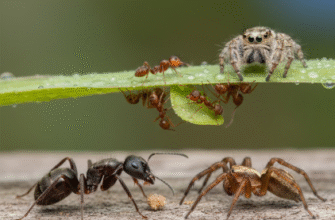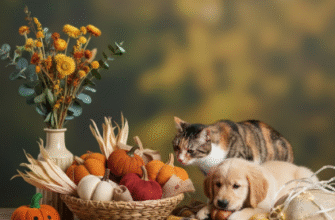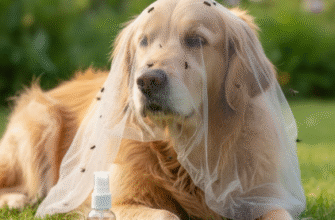Thinking about bringing a shelled friend into your home? Turtles can be fascinating companions, offering a glimpse into a prehistoric world right in your living room. However, choosing the right turtle, especially when you’re just starting, is crucial. These aren’t low-maintenance pets like a goldfish; they require specific care, dedicated space, and a significant time commitment. Jumping in without research often leads to frustration for the owner and, sadly, poor health for the turtle. This guide aims to introduce you to some popular turtle species often recommended for beginners, helping you understand what you’re getting into before you make a decision.
Before falling in love with a specific type of turtle, take a step back and honestly assess your capabilities and resources. Turtles aren’t all the same, and their needs vary wildly. Ask yourself some key questions: How much space can you realistically dedicate? Are you prepared for a pet that could potentially outlive you? Can you afford the setup costs (tank, filters, heaters, lighting) and ongoing expenses (food, electricity, potential vet visits)? Understanding these factors will narrow down your choices considerably.
Key Factors in Choosing a Beginner Turtle
Several aspects differentiate turtle species and impact their suitability for novice keepers:
- Adult Size: That tiny turtle in the pet store won’t stay tiny! Many popular species grow quite large, requiring massive tanks or even outdoor ponds. Always research the
maximum adult size, not the hatchling size. - Lifespan: Turtles are famous for their longevity. We’re not talking 5-10 years; many species live for 20, 30, 50 years, or even longer with proper care. This is a lifelong commitment, quite literally.
- Aquatic vs. Semi-Aquatic vs. Terrestrial: Does the turtle spend most of its time in water (aquatic), divide time between land and water (semi-aquatic), or live primarily on land (terrestrial, like Box Turtles)? This dictates the entire enclosure setup. Most common beginner turtles are aquatic or semi-aquatic.
- Diet: Are they herbivores (plant-eaters), carnivores (meat-eaters), or omnivores (eating both)? Sourcing the right food and ensuring variety is essential for their health.
- Temperament: Some turtles are more interactive or tolerant of handling than others. However, it’s important to remember that turtles generally aren’t cuddly pets and handling can stress them out. Observation is often the best way to enjoy them.
- Care Complexity: Some species have very specific temperature gradients, humidity levels, or water quality parameters that are challenging for beginners to maintain consistently.
- Legality: Check your local and state regulations. Some turtle species may be illegal to own, sell, or transport in your area. This often applies to native species.
Popular Turtle Species Often Considered for Beginners
Here’s a look at some turtles frequently seen in the pet trade, along with points to consider for a first-time owner. Remember, even “beginner” turtles require significant care.
Red-Eared Slider (Trachemys scripta elegans)
Perhaps the most recognizable pet turtle globally. Hatchlings are small, green, and undeniably cute, with distinctive red markings behind their eyes (though variations exist). They are active swimmers and enjoy basking.
- Size: Can reach 10-12 inches (shell length). Males are typically smaller than females.
- Lifespan: 20-40+ years.
- Habitat: Aquatic. Requires a large tank (rule of thumb: 10 gallons per inch of shell length, so a full-grown adult needs 100+ gallons), strong filtration, a basking area with heat and UVB light, and clean water.
- Diet: Omnivorous. Juveniles eat more protein (insects, commercial pellets), adults shift towards more vegetation.
- Beginner Notes: Widely available and relatively hardy. However, their large adult size and long lifespan catch many unprepared owners off guard. They require a significant investment in large enclosures. Many end up abandoned or surrendered due to inadequate planning.
Important Consideration: Red-Eared Sliders grow much larger than people expect. That small turtle needs a very big tank eventually, often exceeding 100 gallons. Be absolutely sure you can provide this space and filtration before getting one.
Painted Turtles (Chrysemys picta)
Named for their colorful markings, there are four subspecies (Eastern, Midland, Southern, Western) with slight variations in appearance. They are attractive, active turtles often seen basking in the wild.
- Size: Generally 4-10 inches, depending on the subspecies and sex (females larger).
- Lifespan: 20-30+ years, potentially longer.
- Habitat: Aquatic. Similar needs to Red-Eared Sliders but generally stay smaller. A 75-gallon tank is a good target for an adult. Requires clean water, filtration, basking spot with heat/UVB.
- Diet: Omnivorous, enjoying pellets, insects, leafy greens.
- Beginner Notes: A generally good alternative to Red-Eared Sliders if you want an active, basking turtle but prefer a slightly smaller adult size. Still requires a substantial setup. Ensure you know which subspecies you are getting.
Musk Turtles (Sternotherus odoratus) – aka “Stinkpot”
These are small, primarily aquatic turtles named for the musky odor they can release when feeling threatened (though captive-bred ones rarely do). They are bottom-walkers more than active swimmers but still need access to the surface to breathe.
- Size: Small, typically 3-5 inches.
- Lifespan: 30-50+ years.
- Habitat: Aquatic. Can thrive in smaller tanks compared to sliders, a 20-gallon long can suit an adult, though larger is always better. Good filtration is still needed, but basking requirements are less intense than sliders or painted turtles; they often prefer submerged logs or shallow areas to rest near the surface. UVB lighting is still beneficial.
- Diet: Primarily carnivorous/omnivorous. Pellets, insects, worms, snails.
- Beginner Notes: Their small size makes housing more manageable for beginners. They are less demanding regarding basking setups but still need clean water and proper diet. They are not strong swimmers and prefer shallower water with plenty of things to climb on to reach the surface easily.
Mud Turtles (Genus Kinosternon)
Similar in size and habits to Musk Turtles. The Eastern Mud Turtle (Kinosternon subrubrum) is commonly available. They are also bottom-dwellers.
- Size: Small, typically 3-5 inches.
- Lifespan: 30-50+ years.
- Habitat: Semi-aquatic to Aquatic. Similar setup to Musk Turtles. A 20-gallon long or larger, good filtration, hiding places, and easy access to the surface. Some may utilize a land area more than Musk Turtles. UVB is recommended.
- Diet: Omnivorous. Commercial pellets, insects, worms, some vegetation.
- Beginner Notes: Like Musk Turtles, their smaller size is advantageous for beginners regarding tank size. They are relatively hardy and interesting to watch foraging on the bottom. Research the specific species of Mud Turtle, as needs can vary slightly.
Reeves’ Turtle (Mauremys reevesii)
A semi-aquatic turtle from East Asia known for its keeled shell (ridges running along the top) and often personable nature. They tend to be more tolerant of handling than many other species, though handling should still be limited.
- Size: Relatively small, usually 4-6 inches, though some females can get slightly larger.
- Lifespan: 15-25+ years.
- Habitat: Semi-aquatic. Needs both a significant water area for swimming and a land area for basking. A 40-gallon breeder tank or larger is a good start for an adult. Requires filtration, heat lamp, and UVB light over the basking area.
- Diet: Omnivorous. Enjoys pellets, insects, fish (sparingly), leafy greens.
- Beginner Notes: Their manageable size and reputation for being less shy make them appealing. They require a setup that accommodates both land and water effectively. Ensure water quality is maintained.
Essential Care Basics (Apply to Most Species)
Regardless of the species you choose, certain elements are non-negotiable for keeping a healthy aquatic or semi-aquatic turtle:
Appropriate Enclosure Size: Always plan for the adult size. Bigger is almost always better. Tanks are heavy and require sturdy stands.Water Quality: Turtles are messy. A powerful filter rated for 2-3 times the actual volume of water in your tank is essential. Regular partial water changes (25-50% weekly or bi-weekly) are crucial to prevent health problems.Heating: Most species need warm water (usually 75-80°F / 24-27°C), maintained with a submersible aquarium heater designed for turtles (or shielded). They also need a warm basking spot.Lighting: This is critical. A heat lamp provides warmth for basking (basking spot temperature varies by species, often 90-95°F / 32-35°C). A separate UVB light is vital for shell health and calcium metabolism. These bulbs need regular replacement (usually every 6-12 months) as UVB output degrades over time, even if the light still works.Basking Area: All aquatic and semi-aquatic turtles need a place to get completely out of the water to dry off and bask under the heat and UVB lights. This can be a floating dock, rocks, or a built-up area.Diet: Provide a varied diet appropriate for the species and age. High-quality commercial pellets can form the base, supplemented with species-appropriate insects, worms, leafy greens, or aquatic plants. Avoid overfeeding.
Verified Fact: Proper UVB lighting is absolutely essential for most pet turtles. Without it, they cannot properly process calcium, leading to serious, often fatal, conditions like Metabolic Bone Disease (MBD), characterized by soft, deformed shells and bones.
Where Should You Get Your Turtle?
The source of your turtle matters. Avoid buying wild-caught turtles, as this depletes wild populations and the animals are often stressed and parasite-ridden. Similarly, impulse buys from kiosks or fairs are risky. Look for:
Reputable Breeders: Specialize in specific species, usually providing healthy, captive-bred animals.Reptile Rescues: Many wonderful turtles end up in rescues due to owners being unable to care for them. Adopting gives a deserving animal a second chance.Specialty Pet Stores: Stores focusing on reptiles may have knowledgeable staff and source their animals responsibly, but always ask questions about the turtle’s origin.
Always observe the turtle before buying. Look for clear eyes, a smooth shell (unless it’s a naturally keeled species), active behavior (when appropriate for the species), and no signs of respiratory issues (like bubbles from the nose).
Final Thoughts
Choosing a turtle is a big decision. While species like Musk, Mud, Painted, and Reeves’ turtles are often considered more manageable for beginners than giants like Red-Eared Sliders,








